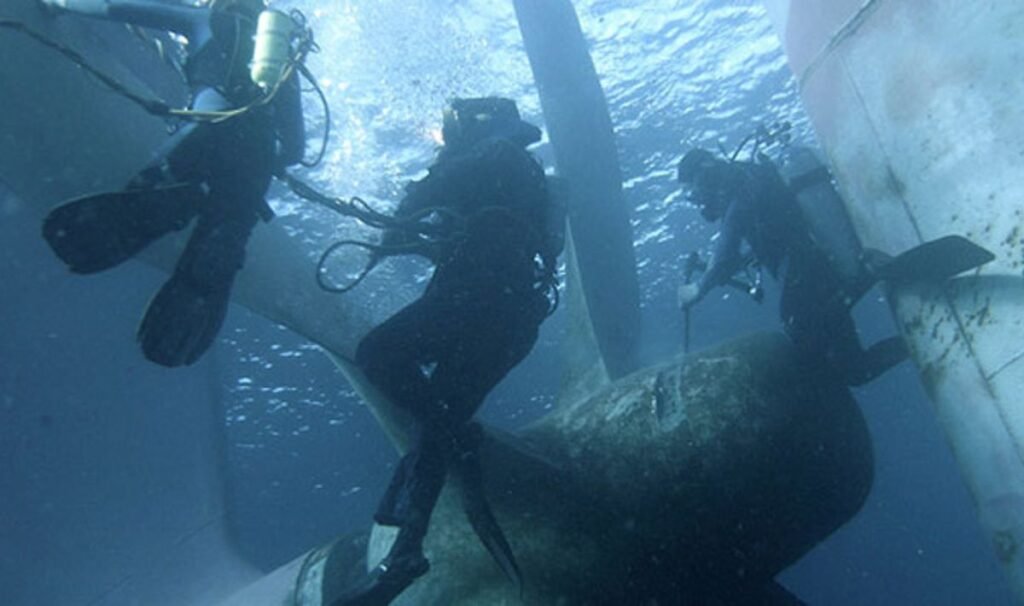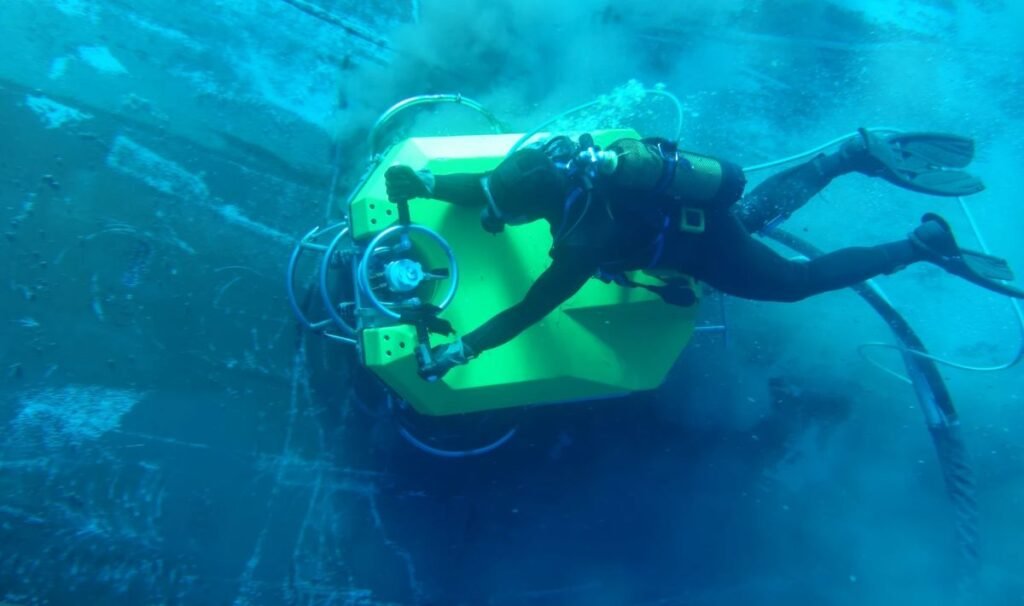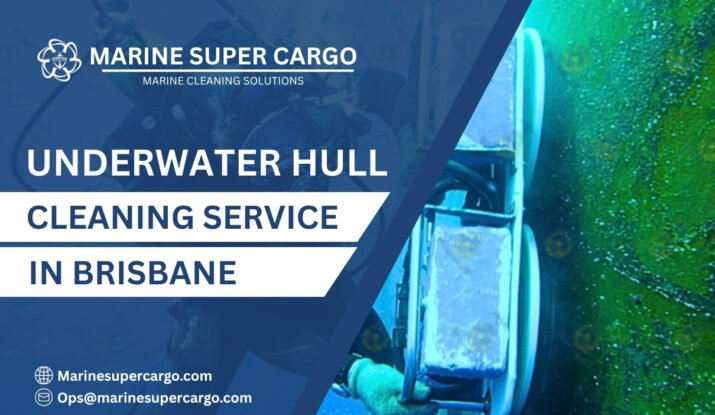There’s something magical about watching your vessel glide through Brisbane’s winding river or out into the Pacific. But beneath the surface? A battle’s brewing. Algae, barnacles, and marine organisms quietly attach to your hull, slowing your boat, spiking fuel costs, and harming efficiency.
That’s where underwater hull cleaning in Brisbane comes in. Regular cleaning doesn’t just restore speed and cut drag—it protects your investment, reduces emissions, and keeps you compliant with Australia’s strict environmental standards.
Let’s dive into why, how, and when to clean your hull—so every journey feels as smooth and powerful as it should.
The Brisbane Marine Environment: A Prime Setting for Biofouling Underwater Hull Cleaning in Brisbane
Brisbane’s nutrient-rich rivers and warm coastal waters create ideal conditions for marine growth. Barnacles, algae, and other organisms flourish beneath the surface, especially during the warmer months.
Vessels here face faster and more aggressive biofouling than in many other Australian ports. High boat density, constant traffic, and tight berths mean fouling builds up quickly and spreads easily.
The takeaway? In Brisbane, routine underwater hull cleaning in Brisbane isn’t optional—it’s essential for staying efficient, compliant, and ahead of costly marine buildup.
Biofouling: What Lurks Beneath the Surface?
So, what exactly are you fighting? Here’s the usual lineup:
- Marine slime: The “starter” layer, allowing tougher hitters to get a grip.
- Algae and weeds: Speed bumps for a sleek hull, these green growths love warm, light-filled waters.
- Barnacles and shellfish: The heavy-hitters—hard, stubborn, and a nightmare to remove with basic gear.
- Tube worms and crustaceans: These can clog intakes, thrive in sea chests, and put critical systems at risk.
Even a thin coating can boost your drag, forcing your engine to work overtime and your fuel consumption—and costs—to climb.

Modern Methods of Underwater Hull Cleaning in Brisbane
Long gone are the days of risky, paint-stripping techniques or polluting the river for a quick clean. Today’s underwater hull cleaning in Brisbane blends tradition with impressive technology.
Traditional Divers vs. Next-Generation Technology for Underwater Hull Cleaning in Brisbane
- Divers: Precise, hands-on cleaning—ideal for complex areas and spot repairs.
- ROVs: Underwater drones offer safe, efficient cleaning and HD inspections without diver risk.
- Eco Jets: Gentle, adjustable high-pressure water jets clean without damaging coatings.
- Capture Systems: Enclosed units vacuum and filter debris in real-time—essential for eco-compliance.
Eco-Friendly and Regulatory-Compliant Solutions of Underwater Hull Cleaning in Brisbane
- Vacuum and filtration: Cleaners now use strong suction to collect marine debris before it hits Brisbane’s ecosystem, sending waste to licensed stations and recycling centers.
- Low-impact chemicals or abrasive systems: Some machines need no chemicals, keeping the environment safe.
- Regulatory compliance: Brisbane has stringent rules for underwater works. Cleaners meet these with licensed divers, regular audits, and up-to-date decontamination practices.
Benefits of Regular Underwater Hull Cleaning in Brisbane
Still on the fence? Regular underwater hull cleaning in Brisbane is the boat owner’s secret weapon for staying ahead of the curve.
Fuel Efficiency, Speed, and Operating Costs of Underwater Hull Cleaning in Brisbane
Picture this: with every bit of slime and barnacle gone, your vessel glides with less drag and less stress on the engine. The payoff? Fuel savings of up to 10–40%, depending on how long between cleans and the growth type on your hull. Less drag also means you can reach top speeds—no more wondering why your boat feels “tired.”
When Should You Schedule Underwater Hull Cleaning in Brisbane?
Cleaning should align with guidelines from both Port Australia and the IMO—especially before regulatory inspections, international voyages, or after extended port stays.
- Every 3–6 months for most active commercial or recreational boats.
- Monthly or bimonthly for race yachts or vessels seeking peak efficiency.
- Before and after major trips, especially if you’ve been through dirty, nutrient-rich, or tropical waters.
- If you notice speed loss, engine strain, or your hull feels “sluggish” during maneuvering.
A Step-by-Step Look at the Cleaning Process of Underwater Hull Cleaning in Brisbane
Inspection and Planning
- Start with a visual inspection—often using underwater drones with HD cameras to document fouling and flag any damage.
- Your hull cleaning expert will consult with you, building a plan tailored to your hull material, paint, and type of fouling.
The Cleaning Procedure: Tools and Techniques
- Divers or ROVs go to work, using soft brushes, scrapers, or high-pressure water jets—sometimes all three.
- Cutting-edge systems maintain antifoul paint, avoid structural harm, and ensure no debris enters the water.
- For highly contaminated hulls, enclosed collection or suction-based tools keep the Brisbane River eco-friendly.
Post-Cleaning Review and Documentation
- After cleaning, another inspection provides before-and-after photos or videos for your records.
- Official documentation ensures you’re compliant for inspections or port calls, and can be invaluable for insurance or resale.
Tackling Brisbane’s Unique Challenges
Brisbane’s waters feature variable salinity, strong currents, and a high rotational traffic curve—a perfect storm for marine growth. Local regulations add to the mix, meaning only qualified, insured specialists should touch your hull. It’s also vital that all work avoids spillage or debris contamination, preserving the river for everyone.
How to Choose the Right Service for Underwater Hull Cleaning in Brisbane
Choosing a service provider is more than checking prices—it’s a matter of trust:
- Look for compliance with environmental and safety regulations.
- Ask for diver or operator certifications, as well as up-to-date liability insurance.
- Prioritize teams using proper vacuum or filtration systems to protect Brisbane’s delicate aquatic balance.
- Ensure transparent pricing: typical costs range from $200 for smaller boats to $1500+ for commercial hulls, depending on size and complexity.
- Ask for before-and-after reporting and regular communication throughout the job.

Tips to Maximize the Value of Underwater Hull Cleaning in Brisbane
- Bundle services: Many teams can inspect, polish props, change anodes, and clear intakes—all in one go.
- Regular scheduling saves money: Sticking to a cleaning routine often earns bulk discounts and makes each job faster and cheaper.
- Educate your crew: Teach the team what early biofouling looks like—they can help spot problems before they drag you down.
- Keep documentation: Inspection images and reports pay off at audit, resale, or for warranty claims.
Conclusion: Glide Through the Brisbane Waters
If you love strong, reliable, green-powered boating, make underwater hull cleaning in Brisbane a core part of your maintenance ritual. Dodge unnecessary fuel costs, avoid pollution risks, and give your vessel the edge it needs for safe, swift passage. In a city where the river is a way of life, a clean hull is your ticket to smoother, more responsible sailing. Happy boating—may every launch feel like brand new!
FAQ:
Q1. How often should I schedule underwater hull cleaning in Brisbane?
For most vessels, every 3–6 months is ideal, but racing or frequently used boats can benefit from monthly cleans, especially during summer when biofouling thrives.


